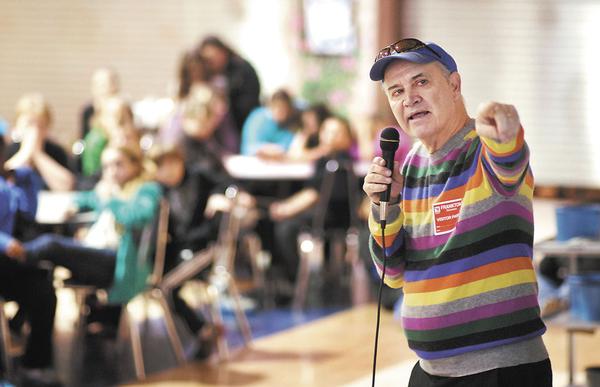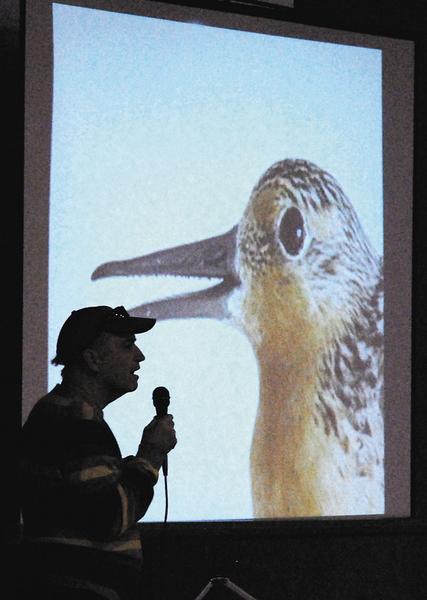Author talks to elementary students about shorebirds, preserving nature
By Dani Palmer
The Herald Bulletin
FRANKTON, Ind. — Frankton fifth-grader Hannah Smith had no idea what a red knot was until author Phil Hoose stopped by.
Hoose was at Frankton Elementary School on Thursday morning to talk to the students about shorebirds, along with a few of the animals they encounter and the importance of preserving nature.
The hero of his latest book, “Moonbird,” is a red knot shorebird named B95.
Hoose said he wants the kids to “feel some empathy and respect for them, preserve their habitat for them and to love birds” that actually have “rugged lives.”
“Caring is at the core of all of it,” he said, adding developing a philanthropic nature while young can really make a difference.
Fifth-grader Aden Steigerwalt said he thinks it’s important to be knowledgeable about nature and take care of it.
“Animals do their part, we should do ours,” he said.
Frankton Elementary has worked to raise money for the Nature Conservancy, an organization that works globally to protect ecologically important lands and waters, for 18 years now, raising more than $20,000 for the Adopt-an-Acre program.
Ken Kakasuleff, a fourth-grade teacher who helped get the program started, said students raise money through jar wars, in which each grade collects coins in 5-gallon jugs to build up points. Students can put bills in another grade’s jug to subtract points and the grade that receives the most gets rewarded with a party.
“It generates a lot of enthusiasm and they know it’s for a good cause, what it’s for,” Kakasuleff said.
The school completes jar wars the week of Earth Day or Arbor Day and students study nature as they do it.
Hoose has worked with the Nature Conservancy for 36 years now and was in the area to make some presentations for the organization. He said Frankton is well-known for its conservation efforts and that he was happy to stop by to spread awareness and teach the kids about animals they may not have known exist.
B95 is “bionic.”
Hoose said 55 percent of red knots die in the first year of their lives and the rest live to be about 7 years old. B95 is 20 years old, the oldest of his species ever.
“He’s become world, world famous, this bird is,” Hoose said. “This guy is something special.”
B95 has flown more than 350,000 miles, he said, which equivalents the distance to the moon and nearly halfway back. Red knots fly from the bottom of the world to the top each year, through hazardous weather like hurricanes.
“I think it’s cool for a bird to fly like that,” Steigerwalt said, comparing B95 to a rocket.
Before he left, Hoose donated four of his books to the school’s library, signing each copy for the students.
As for B95, he was last seen May 28, Hoose said, and it’s unknown if he’s still alive. But if he is, he’s probably in Chile right now where a big flock has been reported.


